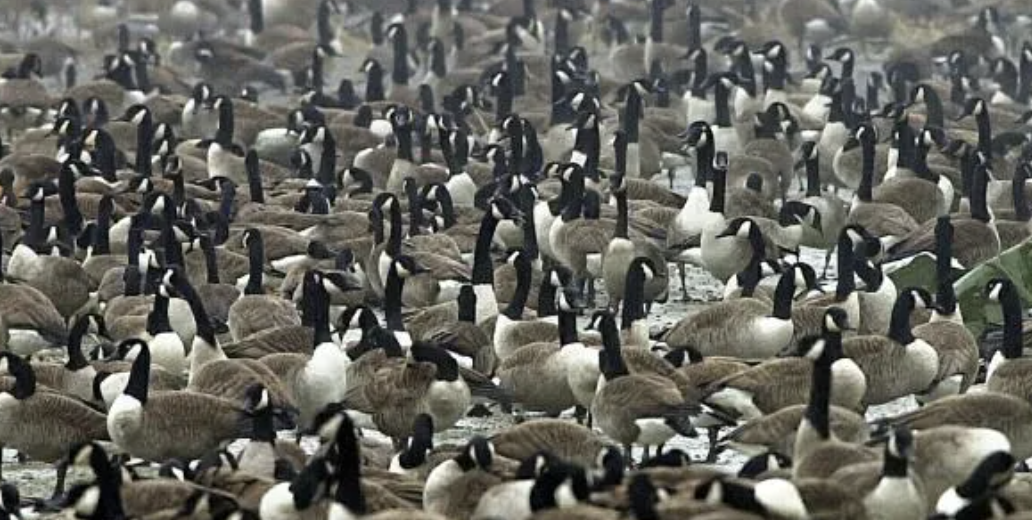
“God answers the mess of life with one word: Grace.”
-Max Lucado
If you live near a freshwater lake somewhere between the arctic regions of North America to the tip of Key West to the beaches of San Diego, you know what time of year it is; the mating season for the Canada goose – an unwelcome period for most humans living within close proximately of the beautiful, yet bothersome creatures.
If you were born in the early 60s or before, and you’re trying to remember these pesky creatures in your growing-up years, you don’t. There weren’t many of them around. Their proliferation is a phenomenon of the last sixty years, as the worldwide Branta canadensis population has soared from around 500,000 to over 6+ million – a 1200% increase.
I remember my first sighting of a Canadian goose. It was in 1976 at Oconee State Park, in northwestern South Carolina. Never having seen one in the wild before, I thought perhaps this specimen had been introduced as a new park pet. At the encouragement of a friend, I approached the goose with a piece of bread and a plan to feed it with my outstretched hand. When I got about six to eight feet from the goose, he stared me in the eye, straightened out his neck, pointed his beak in my direction, and began to charge me at full speed with an ear-curdling honk.
I quickly reversed my direction and attempted to run away from the ferocious beast, but the combination of my quick pivot and my slick-soled shoes sealed my fate. I fell face down on the damp grass as the goose jumped onto my back. For a moment I experienced what Clarence from “It’s a Wonderful Life” longed for – getting his wings. I looked to my right and then to my left, and noticed that I had gotten my wings. The five-foot wingspan of this crazed waterfowl left a dark shadow as he stretched out his airfoils, blocking the mid-May sun, and creating a momentary eclipse.
As I lay there He began pecking the back of my head as my life flashed before me. I scrambled to get up, eventually gaining traction as I pulled myself slowly, inch by inch away from my attacker until he gave up the fight, and just a few seconds before I gave out of breath.
Canadian geese were once one of the most abundant species of waterfowl in North America, with a population estimated to be in the millions. In the early 1900s, overhunting, habitat loss, and pollution caused a significant decline in their population. Harold Hanson, a wildlife biologist, was instrumental in saving the Canada goose and its successful reintroduction in the 1950s and 1960s, through his research and innovative techniques for capturing, banding, and relocating geese.
Fast forward to today and you’ll find these 6 million plus critters congregating increasingly in urban areas as they have gone from near-extinction to the official status of “nuisance.” They are considered a nuisance due to the way they damage property (their droppings create sanitation issues and be unpleasant to look at), their aggressive behavior toward humans (safety concerns in public areas), their noise pollution (loud honking), and their impact on ecosystems (their overpopulated and can negatively impact local ecosystems by overgrazing and out-competing other bird species for resources).
Canadian geese and humans are a lot alike.
Although we don’t have wings and rarely poop in public, we humans can be a nuisance by the damage we cause to our fellow species through our aggressive behavior toward others, the boisterous tooting of our own horn, and our failure to live in harmony with our brothers and sisters in God’s ecosystem. We often bite the very hands that feed us as we stiffen our necks and honk loudly in the direction of a “friendly” as if it were a foe.
When observed up close, one will notice both humans and geese are messy. When you’re perched hundreds of feet above the street looking out the window of a skyscraper at the humans below, you don’t see the messiness, just like geese flying in their famous “V” formation at the same distance above. From a distance people and geese are majestic; up close, not so much so.
I don’t know what God had in mind when He created geese, but thanks to the Bible, I do know what God had in mind when He created humans. He did not create us to be a nuisance. He created us “in His own image.” God’s Word tells us that “All things were created by Him and for Him (Col 1:16),” for “His pleasure (Rev 4:11),” and for a relationship with Him (Rev 3:20). We may not see the messiness in others or ourselves from a distance, but thanks be to God that He can. He didn’t create us in messiness; our own choices (sin) put us there.
The good news is that God cares so much about us beautiful, yet sometimes bothersome creatures that He provides a way out of our messiness. He saw our messiness (sin) and came to clean us up. God redeemed us from our self-induced nuisance status through what God did for us through His Son, Jesus Christ (see Romans 5).
So rejoice and give thanks. Flap your wings and wiggle your tail feathers, and …
Play to win this week in the game that really counts!
Are you a business owner, executive, or other professional looking to grow your business and improve your life? If so, see how Bill and his firm might be able to help you: Northstar Leadership
